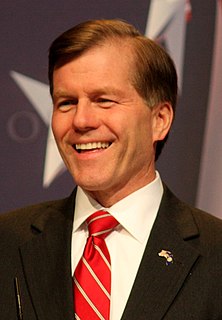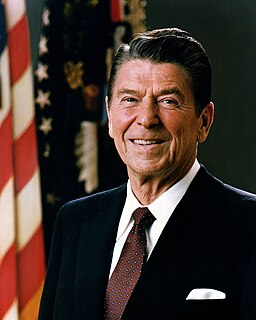
The Conservative Party of New York State is a political party founded in 1962. The Party was founded due to conservative dissatisfaction with the Republican Party in New York. Since 2010, the Conservative Party has held "Row C" on New York ballots—the third-place ballot position, directly below the Democratic and Republican parties—because it received the third-highest number of votes of any political party in the 2010, 2014, and 2018 gubernatorial elections.

The 1978 United States Senate elections in the middle of Democratic President Jimmy Carter's term. Thirteen seats changed hands between parties. The Democrats at first lost a net of two seats to the Republicans, and then one more in a special election. Democrats nevertheless retained a 58-41 majority.

United States gubernatorial elections were held Tuesday, November 4, 2008 in 11 states and two territories. Prior to the election, eight of the total seats were held by Democrats and five by Republicans. Two governors were prohibited by term limits from seeking re-election in 2008.

The New York gubernatorial election of 2002 was held on November 5, 2002. Governor George Pataki, the two-term Republican incumbent, ran for a third term. Governor Pataki was re-elected to a third term, defeating Democrat Carl McCall and Rochester billionaire Tom Golisano. As of 2019, this is the most recent election in which a Republican was elected Governor of New York.

United States gubernatorial elections were held on November 3, 1998 in 36 states and two territories. Going into the election 24 of the seats were held by Republicans, 11 by Democrats, and one by an Independent. The elections changed the national balance of power by the loss of one Republican and the gain of one Independent, although it shifted in nine states. Democrats gained open seats in California and Iowa and defeated incumbents Fob James of Alabama and David Beasley of South Carolina, while Republicans won open seats in Colorado, Florida, Nebraska, and Nevada and the Reform Party won an open Republican governorship in Minnesota. By the end of the election, 23 seats were held by Republicans, 11 by Democrats, one by the Reform Party, and one by an Independent.

The 2010 Pennsylvania gubernatorial election was held on November 2, 2010, to elect the Governor and Lieutenant Governor of Pennsylvania, concurrently with elections to the United States Senate in Pennsylvania and other states and elections to the United States House of Representatives and various state and local elections.

The Indiana gubernatorial election of 2008 was held on November 4, 2008. Incumbent Republican nominee Mitch Daniels was challenged by Democratic nominee Jill Long Thompson and Libertarian nominee Andy Horning. Daniels easily won reelection, defeating Long Thompson by over 17 points.

The 1998 Alaska gubernatorial general election took place on November 3, 1998. The election resulted in a landslide for the Democratic incumbent, Tony Knowles, who had won the 1994 gubernatorial election by only 536 votes. Knowles was the first incumbent governor to attain re-election since 1978. As of 2019, this is the most recent election in which a Democrat was elected Governor of Alaska and the most recent election in which an Alaskan governor was re-elected.

The 2002 Maryland gubernatorial election was held on November 5, 2002. Democratic Governor Parris Glendening was term-limited and could not seek a third term. Bob Ehrlich defeated Kathleen Kennedy Townsend, enabling him to become the first Republican governor since Spiro Agnew in 1966. This was the last time Charles County voted Republican for any office.

W. Wayne Townsend was an American politician from the U.S. state of Indiana. A Democrat, he was his party's gubernatorial nominee in 1984. Townsend was defeated by the incumbent Republican Governor Robert D. Orr in a year in which Indiana joined forty-eight other states in reelecting the Reagan-Bush ticket.

United States gubernatorial elections were held in 12 states and two territories. Of the eight Democratic and four Republican seats contested, only that of North Carolina changed party hands, giving the Republicans a net gain of one governorship. These elections coincided with the presidential election on November 6, 2012.

The 1974 Massachusetts gubernatorial election was held on November 5, 1974. Michael Dukakis was elected to a four-year term, from January 4, 1975 until January 4, 1979. He defeated incumbent Governor of Massachusetts Francis W. Sargent in the general election.

The 1970 Massachusetts gubernatorial election was held on November 3, 1970. Acting Governor Francis W. Sargent was elected to a four-year term. He defeated incumbent Boston Mayor Kevin H. White in the general election.

The 1964 Massachusetts gubernatorial election was held on November 3, 1964. Former Governor John A. Volpe was elected to a two-year term. He defeated former Lieutenant Governor Francis X. Bellotti in the general election.

The 1962 Massachusetts gubernatorial election was held on November 6, 1962. Former Executive Councilor Endicott Peabody defeated incumbent Governor John A. Volpe in the general election.

The Missouri lieutenant gubernatorial election, 2012 was held on November 6, 2012. Incumbent Republican Peter Kinder faced Democratic nominee and former state auditor Susan Montee, Libertarian Matthew Copple, and the Constitution Party nominee, former state representative Cynthia Davis.

The 1992 Indiana gubernatorial Election was held on November 3, 1992. Incumbent Governor Evan Bayh, a Democrat, won reelection over his Republican challenger, Linley E. Pearson with 62% of the vote. He was the first Democratic governor of Indiana to win reelection since governors became eligible for election to consecutive terms in office in 1972.

The 1980 Indiana gubernatorial election was held on November 4, 1980 in all 92 counties in the state of Indiana. Otis R. Bowen, the state's incumbent governor was ineligible for a third consecutive term due to term limits set forth in the Indiana Constitution. Robert D. Orr, the state's incumbent Republican lieutenant governor, was elected to his first term, defeating John A. Hillenbrand II, and a minor party challenger.

The 1968 United States presidential election in Michigan was held on November 5, 1968. All 50 states and The District of Columbia, were part of the 1968 United States presidential election. Michigan chose twenty-one electors to represent them in the Electoral College, who voted for president and vice president.


























